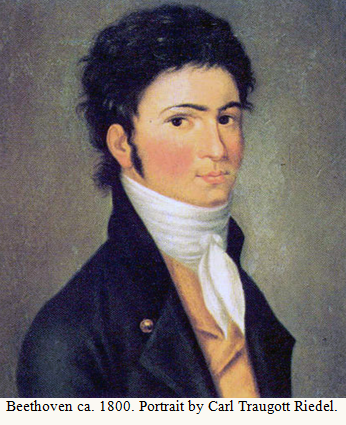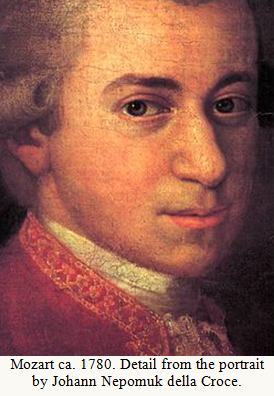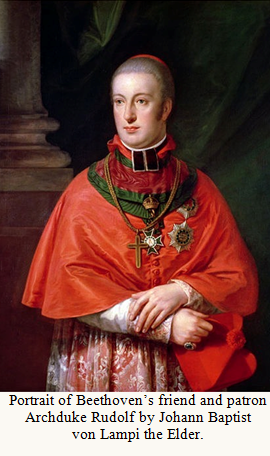Johann Sebastian Bach (1685-1750)
arr. György Kurtẚg (b. 1926)
Chorale Prelude: “Durch Adams Fall ist ganz verderbt” BWV 637 (1713; arr. 1985)
The Chorale Prelude “Durch Adams Fall ist ganz verderbt” was originally part of a set Bach wrote while organist (and later Konzertmeister) for the ducal court at Weimar. These short but elaborate solo organ pieces, based on Lutheran hymn tunes, were written between 1708 and 1717 during Bach’s tenure at Weimar. Bach eventually issued the entire set as the Orgelbüchlein (Little Organ Book).
The Orgelbüchlein’s purpose, like so much of Bach’s music, was at once liturgical and pedagogical. Bach’s original intention—never realized to its full extent—was to create a set of chorale preludes spanning the entire Lutheran liturgical year. The preludes were intended as teaching examples for students, in particular Bach’s eldest son Wilhelm Friedemann.
Bach’s realizations of the hymn tunes are elaborate and rigorously contrapuntal. Yet, as the editors of the New Bach Reader note, the preludes maintain a “purity of polyphony, [wherein a discrete] number of voices is maintained throughout a composition.” While the hymn tunes and their accompanying texts would have been familiar to a contemporary audience, in this case the Chorale Preludes were meant for listening, not singing. Yet even without a sung text, Bach’s realizations remain true to the meaning and sentiment of their source texts. The choices of contrapuntal and harmonic textures are not merely technical display, but intimately tied to the meaning of the music. In “Durch Adams Fall ist ganz verderbt” (“All mankind fell in Adam’s fall”) listen for the menacing and chromatic descent of the inner voices.
Antonio Vivaldi (1678-1741)
Cello Concerto in G major, RV 414 (ca. 1730)
Double Concerto for Violin and Cello in F major, RV 544, “Il Proteo” (1742)

The Republic of Venice in the late seventeenth century was a city in transition. The wealth and power of its great trading empire was dwindling even as its reputation as an important center for art and culture was on the rise. Visitors from across Europe came to admire the art, architecture, and burgeoning instrumental and operatic musical scene. It was a time and place for which Antonio Vivaldi’s talents were ideally suited, whose music would become famous and influential throughout Europe.
Born in Venice in 1678, Vivaldi was one of the most prolific and influential composers of the Baroque Era. Vivaldi was the oldest of six children, and the son of a barber-turned-professional violinist. The young Vivaldi likely learned the violin from his father starting at a very young age, and his abilities developed prodigiously. It was common for Italian families of the time to devote at least one child to a religious life, and at the age of fifteen, Vivaldi took his first religious vows. By twenty-four, he was ordained a priest.
At the age of twenty-three, Vivaldi was appointed as violin instructor at the Ospedale della Pietà. The Ospedale was a state-funded school and boarding house for illegitimate and orphaned girls, some of whom received specialized musical training. In addition to his teaching duties, Vivaldi was also obliged to compose both sacred and secular works for the Ospedale’s various musical ensembles. The Ospedale was already known for its high musical standards, but thanks to the talents and energies of Il prete rosso, its all-girl orchestra and choir became famous throughout Europe.
In Vivaldi’s era composers wrote using established conventions, and were expected to compose prolifically for many different occasions. Instrumental works were not unique, personal artistic statements as they have tended to be since the time of Beethoven. Rather, a given work is an example of its musical genre, broadly accepted and appreciated for the varieties of emotion and affect with which a composer could imbue it.
Over the course of his life, Vivaldi composed some 500 concerti grossi, a form he helped perfect and popularize throughout Europe, for varying instruments and ensembles. Purely instrumental musical forms such at the concerto grosso originated from the sonata di chiesa, or “church sonata,” a musical work intended to accompany certain parts of the traditional Mass. Also known as “trio sonatas,” the sonata di chiesa involved two solo parts and a continuo part for two players (accompanying harmony and bass line). The concerto grosso is an expansion of this concept. The term concerto refers to musicians “joining together…[and] competing in friendly rivalry” as one contemporary aptly described it. This more intimate and collaborative form eventually evolved into our modern understanding of the concerto as a genre that displays a virtuosic solo part in relief against a full orchestra.
Musicologist H.C. Robbins Landon’s describes Vivaldi’s style as, “[a] wiry, nervous sound and…intense concentration of rhythmic designs.” The frenetic rhythmic energy of Vivaldi’s fast movements became a hallmark of his style. These characteristics are on full display in the outer movements of the Cello Concerto in G Major, thought to be written around 1730. The Cello Concerto is also notable for its profound and operatic slow movement, marked Largo.
The Double Concerto in F Major is somewhat of a novelty. The amusement of the work comes from the musical acrobatics requested of the two soloists, who are treated throughout the Double Concerto as entirely interchangeable parts. The Double Concerto’s subtitle, “Il Proteo o sia il mondo al rovescio,” translated as “Proteus, or, The World Turned Upside Down,” summarizes this quite neatly. Vivaldi’s instructions in the score read as follows: “The solos of the principal violin will be played an octave higher…The first ripieno will be fainter than the solo violin…The solo violin will be able to play the solos of the cello, which in reverse fashion can play the solos of the principal violin at the actual pitch.”
Ludwig van Beethoven (1770–1827)
Horn Sonata in F Major, Op. 17 (1800)
The year 1800 marks the start of Beethoven’s career as a mature composer. This was the year of completion of the Six String Quartets, Op. 18, his Septet Op. 20 (one of his most popular works during his life), and the First Symphony. The Horn Sonata, Op. 17 is closely linked to these much larger and more famous works. Beethoven spent the first months of 1800 tirelessly organizing a benefit concert to present his own orchestral music. The date of the concert was set for 2 April 1800, and the final program featured an unspecified Mozart symphony, two movements from Haydn’s Creation, Beethoven’s own Septet, First Symphony, and First Piano Concerto, as well as an improvisation by the composer (a skill that had helped establish his initial reputation). The concert was a critical success. Though Beethoven had been in Vienna for some eight years, he spent the better part of that time (that is, most of his twenties) studying with the composer Joseph Haydn and establishing his reputation as a virtuoso pianist.

However, in the haste leading up to the benefit concert, other compositional obligations were neglected, most notably the Horn Sonata. The Horn Sonata was written for the Johann Stitch, one of a burgeoning number of soloists making their living as traveling virtuosi. Beethoven had met Stitch some years before, and his presence in Vienna naturally inspired a request for a new work. Stitch’s concert was scheduled for 18 April, little more than two weeks after the benefit concert, and Beethoven quickly set into motion composing the new sonata. Beethoven’s student and disciple Ries claims (likely an exaggeration) that the sonata was entirely written just one day before the concert. While probably untrue, the quickness with which Beethoven was able to compose when required is nonetheless on full display in the Horn Sonata.
The horn of Beethoven’s day had no valves. Thus, it was limited in the notes it could play to those of the instrument’s harmonic series, or those that could be altered by the then-groundbreaking technique of hand stopping (the adjusting notes by inserting the hand into the bell). While this technique offered a greater range of notes available to a composer, these stopped notes carried distinctive muted characteristics based on the hand technique required. Beethoven’s composition fully exploits the striking expressive qualities of these extended techniques, most notably in the brief minor key second movement.
Seemingly of minor relevance in Beethoven’s output, the Horn Sonata can in fact be seen as an important precursor to the greatly expanded role of the horn in Beethoven’s later orchestral writing. The expanded technical and expressive range of the natural horn would become highly influential on future 19th century composers seeking a “purist” horn sound, most notably Johannes Brahms who, in his Trio for Horn, Violin, and Piano, would compose specifically for the then-antiquated valveless horn.
Wolfgang Amadeus Mozart (1756-1791)
arr. Robert Patterson (b. 1970)
Horn Concerto in E-flat Major, K. 447 (1787; arr. 1991)
Mozart’s four horn concertos were written within the last ten years of the composer’s life. Found at varying levels of completion, and often undated, the concertos have been the source of great conjecture since the time of Mozart’s death. In fact, attempts to reconstruct or complete the concertos began very shortly after Mozart’s passing, and have continued through to modern times.

The Concerto in E-flat Major, ostensibly numbered the third when Mozart’s catalog was first assembled in the nineteenth century, was in fact the first chronologically. It also happens to be the most intact from the standpoint of autograph manuscripts. The middle movement, a Romance, was written around 1784, and may have originally been intended as a stand-alone piece. The outer two movements were composed some time in 1787.
All of Mozart’s Horn Concertos were written for Joseph Leutgeb. Some twenty-four years his senior, Leutgeb had been a horn player in the Salzburg court orchestra alongside Mozart’s father Leopold. In his prime, he was considered one of the finest horn players in Austria. Leutgeb’s friendship with the younger Mozart continued throughout both their lives. In fact, Leutgeb seems to have been so completely devoted to Mozart as to allow himself to be the butt of many of the bizarre and degrading practical jokes for which Mozart was infamous. (One such account involves Mozart flinging the score and parts for a piece across the floor and demanding Leutgeb crawl around picking them all up. Another involves writing into the manuscript a string of humorous and insulting live-action descriptions of Leutgeb struggling through the solo part for the Rondo finale of the Concerto in D Major.) Yet Mozart clearly admired his friend enough to have composed four separate concertos for the aging virtuoso.
Robert Patterson’s modern arrangements of the Horn Concertos for solo horn and piano trio offer a valuable middle-ground between performance with full orchestra and performance with piano reduction. As he writes in notes on the arrangements:
Horn players often use the Mozart Concertos as recital pieces—with piano—but both the concerti and the pianists suffer as a result. The goal of this arrangement is to be logistically practical for a recital while providing an accompaniment that is both idiomatic and satisfying. The horn player should not view it as chamber music in the usual sense. The editor recommends that the horn player perform as a soloist, standing (or sitting) in front of the piano trio.
Despite the confusion regarding numbering and chronology, the four Horn Concertos have endured as much-loved staples of the solo horn repertoire.
Ludwig van Beethoven (1770–1827)
Piano Sonata No. 26 in E-flat Major, Op. 81a, “Les adieux” (1809)
Few artists are as famous for their irascible nature and difficult personality as Ludwig van Beethoven. His idealistic and uncompromising standards as both an artist and individual are infamous, and the interpersonal conflicts caused by his temperament well-documented. This makes it all the more striking when one comes across any figure in Beethoven’s personal life to whom he remained friendly and devoted for any extended period of time. Archduke Rudolf was one of the lucky few to bear this distinction.

Born in 1788 to one of the reigning aristocratic families of Vienna, Rudolf received a superb education in his youth, one that put great emphasis on arts and music. Far from being a middling musical dilettante—like so many of his class—Rudolf displayed true interest and above all talent. Rudolf was a superb pianist by his late teens and soon took an interest in composing. In 1804, he became one of Beethoven’s few pupils in composition. The two began a close and lasting friendship. In fact, Rudolf later became one of a small handful of patrons who established an annuity to keep Beethoven from leaving Vienna. Rudolf was also destined to be the dedicatee of many of Beethoven’s most important compositions, in particular the Piano Sonata No. 26 in E-flat Major, Op. 81a, “Das Lebewohl.”
The sonata’s subtitle, “Das Lebewohl,” (“The farewell”) is one of the only the composer inscribed himself, and one of the few explicitly programmatic works he ever wrote. The the first movement of the sonata was composed beginning in the spring of 1809. On 9 April 1809, Napoleon declared war on the Austro-Hungarian Empire. His army began marching on the capital of Vienna, and would lay siege to the capital one month later. The intervening weeks saw chaos in Vienna as the ruling families (including Archduke Rudolf’s) hastily made plans to leave town before the army’s arrival. Amid the specter of war, feelings of sadness at his dear friend’s departure (and uncertain return) weighed heavily on Beethoven. The first movement of the E-flat Piano Sonata was presented to Rudolf as a farewell gift, with the syllables “Le-be-wohl” inscribed beneath the opening three chords. The German word Lebewohl carries a much deeper and intimate meaning than either the French subtitle “Les adieux,” used by Beethoven’s publisher, or the English translation suggest. In fact, Beethoven was furious with his publisher for omitting the German subtitles in favor of the French.
By early fall, the siege was over and Rudolf and his family returned to Vienna. In commemoration Beethoven composed an additional two movements—titled “Absence” and “Return” respectively—to bring the sonata to completion. The sonata as a whole is beloved for its tenderness and singular among Beethoven’s sonatas in its overtly autobiographical nature.
